Special Reports
San Francisco Opera's ARIA Network
 Where opera meets math, language arts, science, and social studies
Where opera meets math, language arts, science, and social studiesWhen Ruth Nott arrived as director of education at the San Francisco Opera in 2008, her charge was to breathe new life into the company’s education programs—to come up with a strategic, quantifiable plan that truly served, and was relevant to, the SFO’s community.
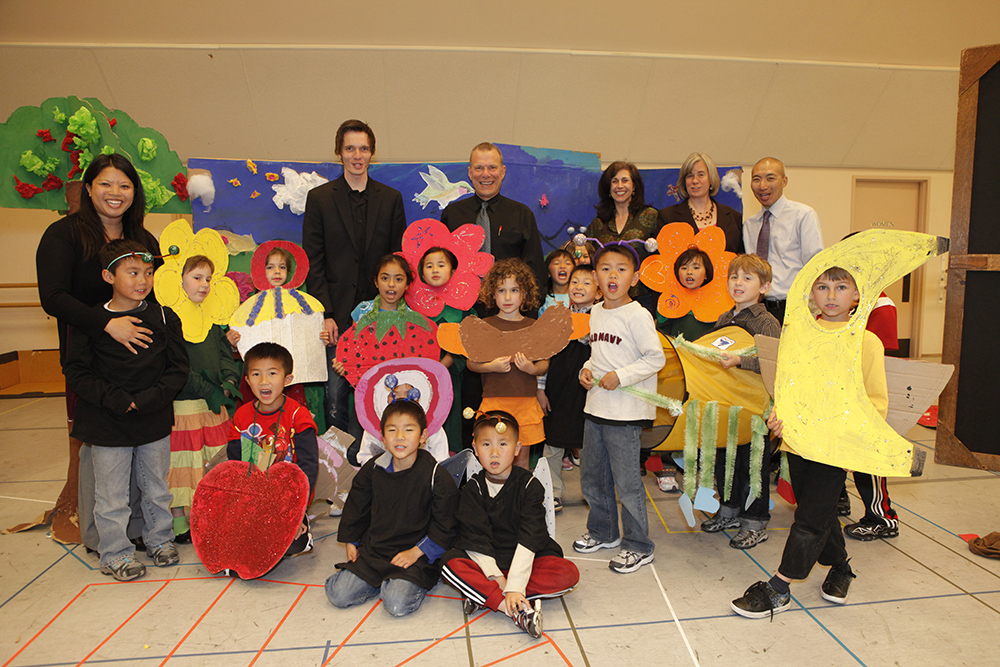 Her first order of business was to ask the components of that community what they needed. “Teachers wanted to learn more about opera through professional development,” she says, “but they also wanted opportunities for their students to connect with the professionals who make opera happen.” Teachers also suggested that students could learn more about the art form by creating their own operas.
Her first order of business was to ask the components of that community what they needed. “Teachers wanted to learn more about opera through professional development,” she says, “but they also wanted opportunities for their students to connect with the professionals who make opera happen.” Teachers also suggested that students could learn more about the art form by creating their own operas.[Jefferson Elementary School’s opera creation wasThe Very Hungry Caterpillar. PHOTO: Cory Weaver]
These, along with other “wish-list” suggestions from district arts coordinators, became the basic ingredients for the ARIA (Arts Resources in Action) Network, now in 12 schools, 66 classrooms, and five school districts. The program has a waiting list, and garners high praise for its connections to the curriculum.
How it works
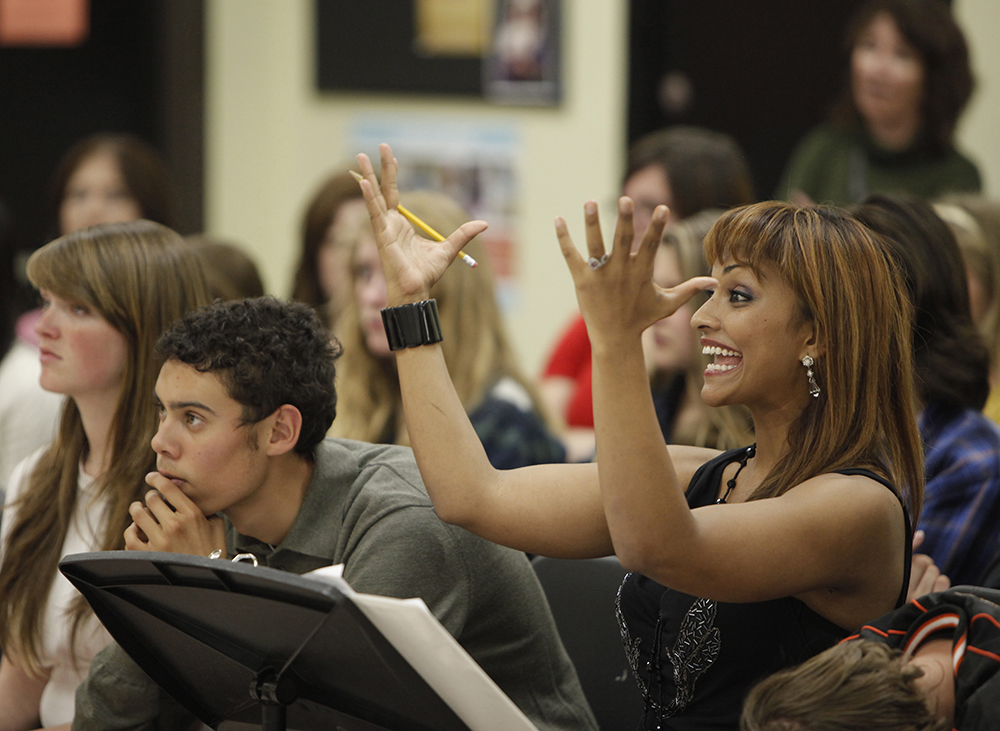 ARIA Network (K-8) runs for a full semester or a full school year, with a classroom visit every week by a teaching artist. Hired by SFO, teaching artists are generally experts in one or more fields—including poetry, scriptwriting, composing, directing, singing, or acting—who have been trained in classroom techniques. They teach students the elements of opera by studying and viewing an opera, either in a dress rehearsal or on film. (They also teach teachers, in special, required sessions.)
ARIA Network (K-8) runs for a full semester or a full school year, with a classroom visit every week by a teaching artist. Hired by SFO, teaching artists are generally experts in one or more fields—including poetry, scriptwriting, composing, directing, singing, or acting—who have been trained in classroom techniques. They teach students the elements of opera by studying and viewing an opera, either in a dress rehearsal or on film. (They also teach teachers, in special, required sessions.)[Danielle de Niese teaches a master class as part of San Francisco Opera’s ARIA Network. PHOTO: Cory Weaver]
Then students create their own opera, writing the music and text, crafting the production, and performing it. (The ARIA Residency, a shorter version, focuses on one aspect of opera, with four to 12 classroom visits.)
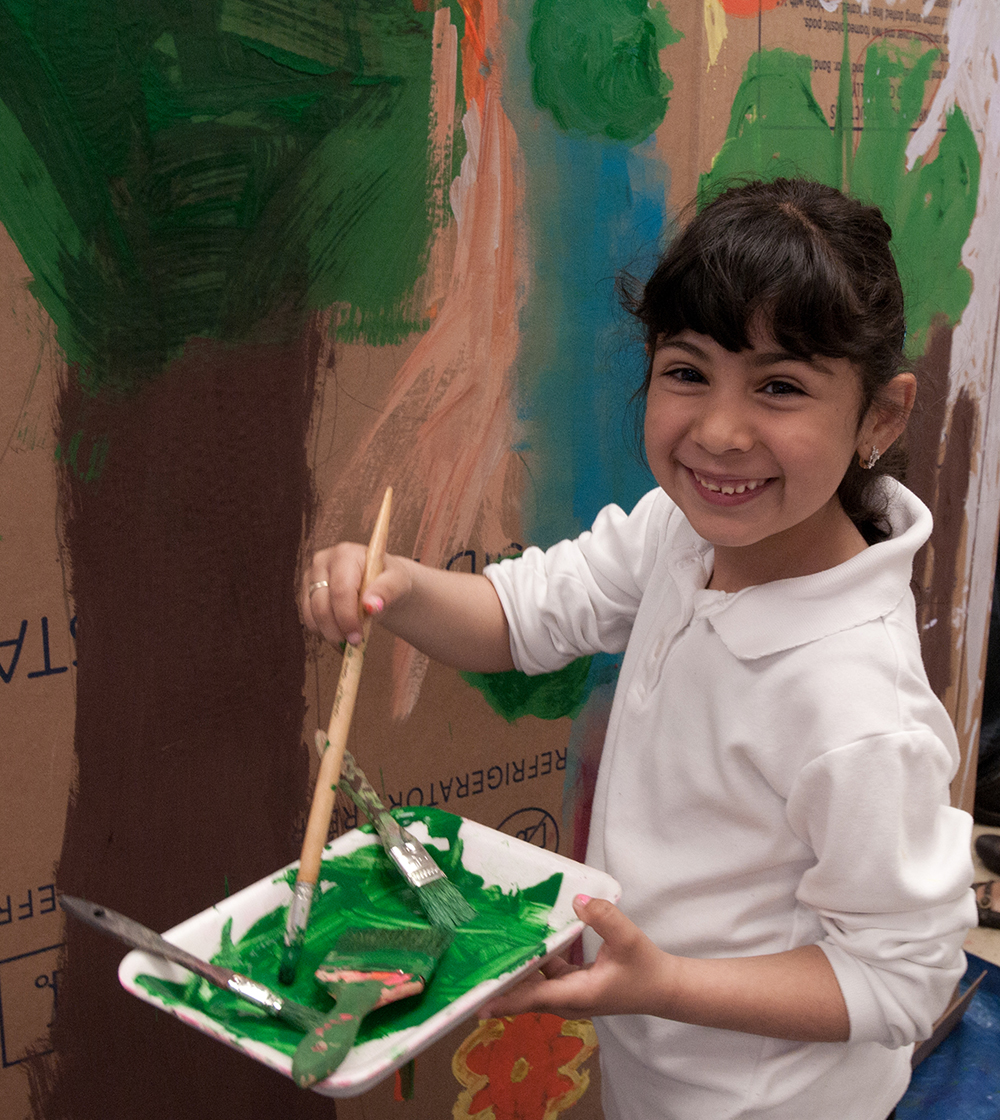 Teachers can also draw on SFO resources. One might decide to bring in a stage director; another might focus on set models, and work them into the math curriculum. “They can bring in people from the opera’s props staff to work with the kids,” Nott says. “If the opera is based on a book [they might ask the kids], ‘do you want the show to look like the book, or not? What props and sets do you absolutely need to show where story takes place?’ Then that props person might come back two weeks later to help build what they talked about.”
Teachers can also draw on SFO resources. One might decide to bring in a stage director; another might focus on set models, and work them into the math curriculum. “They can bring in people from the opera’s props staff to work with the kids,” Nott says. “If the opera is based on a book [they might ask the kids], ‘do you want the show to look like the book, or not? What props and sets do you absolutely need to show where story takes place?’ Then that props person might come back two weeks later to help build what they talked about.”[At El Dorado School, a student works on the set for The Gingerbread Man. PHOTO: Scott Wall]
The company’s young artists—Adler Fellows--and the children’s chorus are also resources. ARIA Network classes may have as many as 40 visits from opera professionals over the course of the school year, providing not only instruction, but first-hand contact for students with the people who make the art form.
Teacher/curriculum-driven
 Each school project is developed individually by teachers in collaboration with teaching artists. The teachers determine the shape of the project and connect it to their curriculum, whether in language arts, social studies, science, or math.
Each school project is developed individually by teachers in collaboration with teaching artists. The teachers determine the shape of the project and connect it to their curriculum, whether in language arts, social studies, science, or math.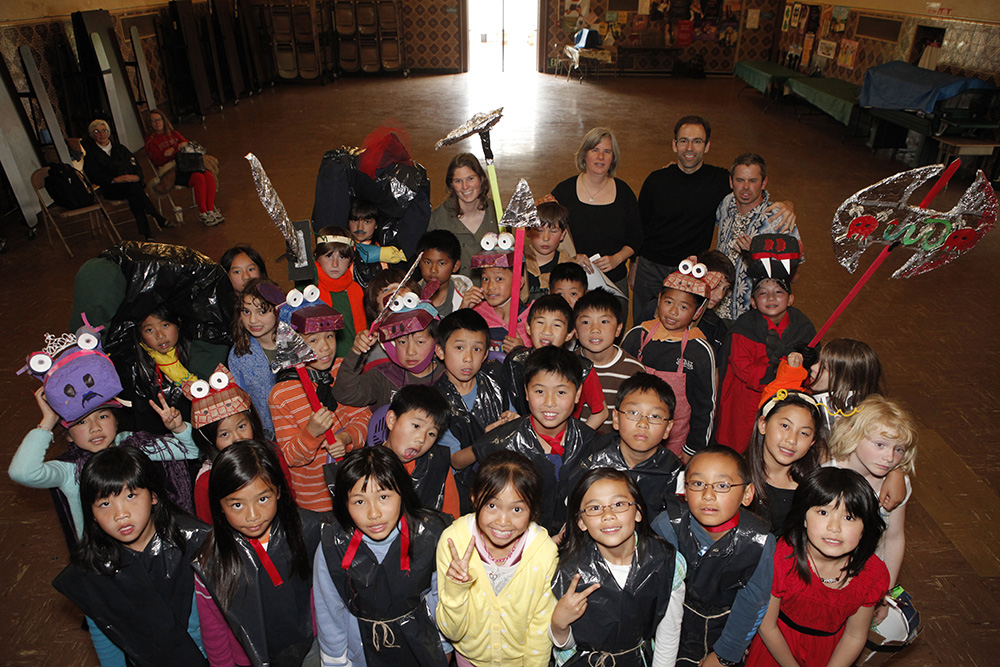 Schools are deeply concerned about meeting academic standards as codified in the federal government’s Common Core (which mandates a certain achievement level at the end of each grade). So K-12 arts programs that have close ties to the curriculum, and that give teachers the tools to meaningfully integrate that program with academics, have a higher chance of being adopted. “We have more schools applying for the program than we can accommodate, because principals see that it is helping them meet the Common Core standards,” Nott says, as well as broadening students’ knowledge of the arts.
Schools are deeply concerned about meeting academic standards as codified in the federal government’s Common Core (which mandates a certain achievement level at the end of each grade). So K-12 arts programs that have close ties to the curriculum, and that give teachers the tools to meaningfully integrate that program with academics, have a higher chance of being adopted. “We have more schools applying for the program than we can accommodate, because principals see that it is helping them meet the Common Core standards,” Nott says, as well as broadening students’ knowledge of the arts.[West Portal Elementary School’s opera was titled The Elganator. PHOTO: Cory Weaver.]
Cost
An Aria Network project in one school, in four or five classes, for a full year, costs SFO about $20,000. The school pays $1500 at the most; supplement funding is available by need, and most of the schools receive some scholarship monies.
Results
SFO’s evaluation of the ARIA Network is ongoing. An analysis of the 2011-12 data by Larry Scripp and the Center for Music in Education detailed positive responses from students, teachers, principals, teaching artists, and parents. One survey’s conclusion was of particular interest: “one of the biggest benefits of the program is the creation of a large production as a powerful social and communal experience.”
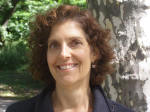 Heidi Waleson is the opera critic for The Wall Street Journal and writes about the performing arts for a variety of national and international publications.
Heidi Waleson is the opera critic for The Wall Street Journal and writes about the performing arts for a variety of national and international publications.





 FEATURED JOBS
FEATURED JOBS

 RENT A PHOTO
RENT A PHOTO


